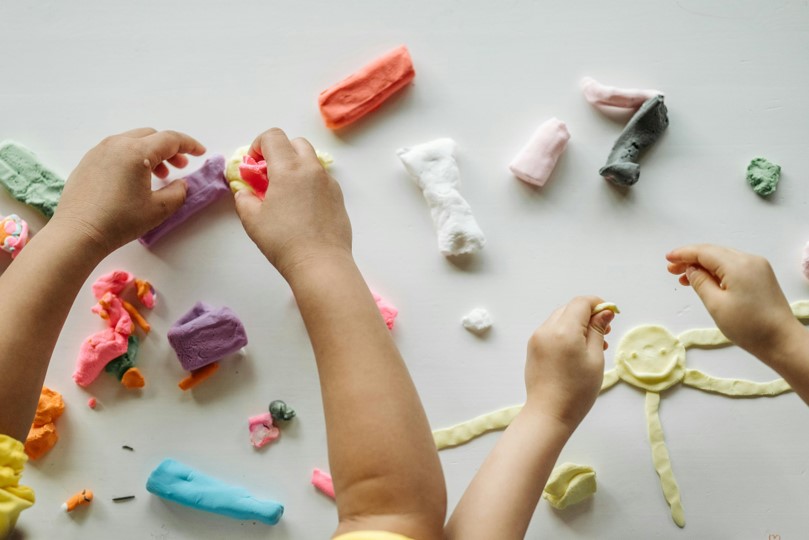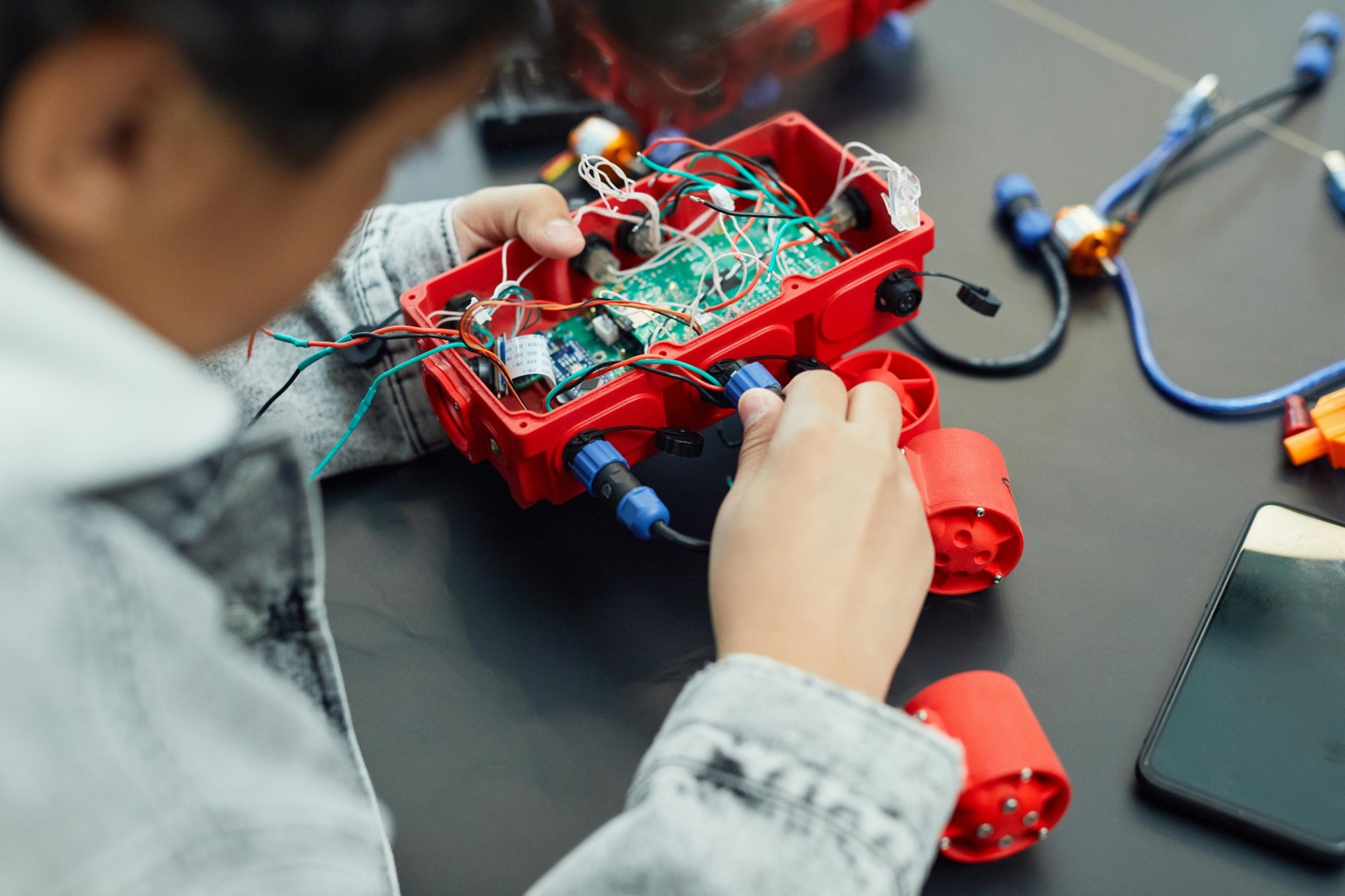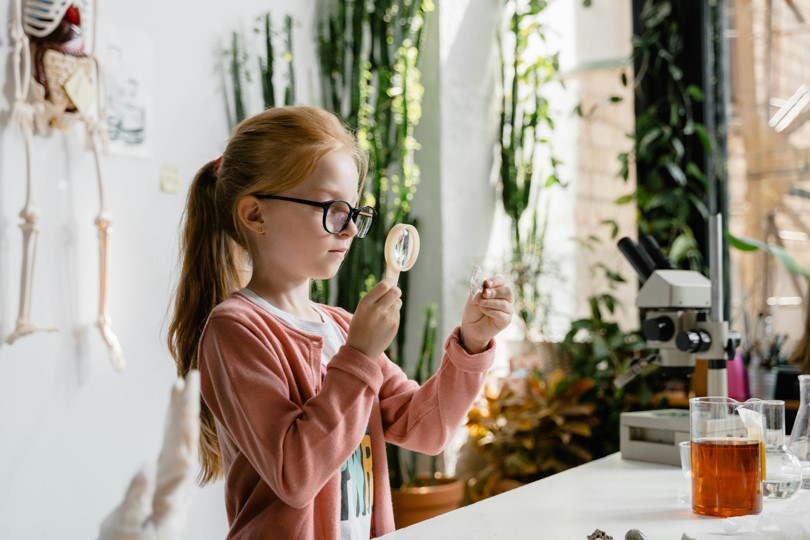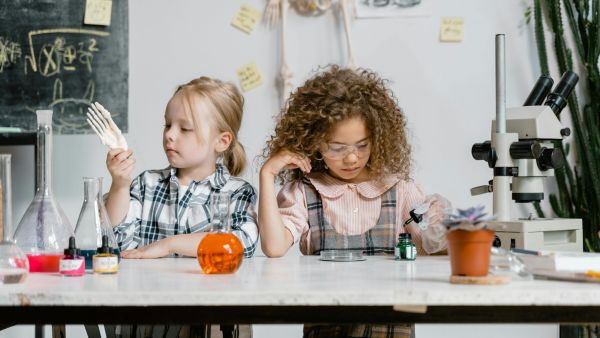When you think about engaging your kids in educational DIY projects, you might realize there's a wealth of opportunities to spark their curiosity and creativity. From conducting simple science experiments to crafting with natural materials, these activities not only make learning enjoyable but also foster essential skills. You might wonder how to choose the right projects that align with your child's interests and age. What if you could create memorable experiences that blend fun and education seamlessly? Let's explore some innovative ideas that could transform your approach to learning at home.

Science Experiments at Home
When it comes to sparking curiosity, science experiments at home offer a fantastic way for kids to explore and learn. You don't need advanced lab equipment or expensive materials; everyday items can turn into exciting experiments. For instance, mixing baking soda and vinegar creates a fizzy reaction that's not only fun but also teaches kids about chemical reactions.
Try making a simple volcano. Fill a small container with baking soda, add food coloring for effect, and then pour in vinegar. Watch as the "lava" erupts!
Another great experiment is creating a homemade compass using a needle, a magnet, and a bowl of water. Kids can learn about magnetism and navigation while having a blast.
Encourage your kids to ask questions throughout these experiments. Why does the vinegar react with baking soda? What happens when they change the amount of each ingredient? This approach fosters critical thinking and scientific reasoning.
Always remember to supervise your kids during experiments, ensuring safety first. By making science fun and accessible, you're not just teaching them about the world around them; you're igniting a passion for discovery that could last a lifetime.

Crafting With Nature
Crafting with nature opens up a world of creativity for kids, allowing them to connect with the outdoors while making unique projects. You can start by gathering materials like leaves, twigs, stones, and flowers during a nature walk. Each item can inspire a fun and educational craft.
For instance, make leaf rubbings by placing a leaf under paper and using crayons to create textured designs. This activity helps kids learn about different leaf shapes and textures.
Alternatively, you can build a small woodland creature using twigs and pinecones, encouraging imaginative play while developing fine motor skills.
Another idea is to create nature collages. Have your kids arrange collected items on a piece of cardboard, gluing them down to form a beautiful scene. This not only promotes creativity but also teaches them about composition and color.
Don't forget to discuss the importance of respecting nature by only collecting what's already fallen. Crafting with nature isn't just about making art; it's about fostering a love for the environment.
Building Simple Machines
Building simple machines can be an exciting way for kids to explore basic engineering concepts while having fun. By engaging in hands-on projects, you'll help your child understand how machines work and how they make our lives easier.
Start with the six simple machines: lever, pulley, wheel and axle, inclined plane, screw, and wedge.
For instance, you can create a lever with a ruler and a small object for the fulcrum. This project will demonstrate how levers help lift heavy items.
Another fun project is building a pulley system using a small wheel and string, which can show how pulleys reduce effort in lifting loads.
You might also try constructing an inclined plane using a board propped up on a sturdy box. Kids can roll different objects down the ramp, exploring concepts like gravity and friction.
These projects not only teach fundamental concepts but also develop problem-solving skills as your child figures out how to build and test their machines.

Art Projects for Creativity
Art projects provide an excellent outlet for kids to express their creativity while developing essential skills. Engaging in artistic activities not only nurtures imagination but also hones fine motor skills, boosts confidence, and teaches problem-solving.
You can create memorable experiences by incorporating various art projects into your child's routine.
Here are some fun ideas to get you started:
- Painting with Nature: Use leaves, flowers, or even fruits as stamps to create beautiful, textured art pieces.
- DIY Collages: Collect old magazines, newspapers, and scrap paper for your child to cut and paste into unique collages.
- Sculpting with Clay: Encourage 3D creativity by letting your child mold shapes using air-dry clay or homemade playdough.
- Recycled Art: Gather recyclable materials like cardboard boxes and plastic bottles to craft innovative sculptures or functional art pieces.
These projects can be tailored to fit any age and skill level, making them perfect for family bonding and skill development.
Cooking and Baking Activities
After exploring the world of art projects, you might find that cooking and baking offer another fantastic avenue for kids to express their creativity. These activities not only engage their senses but also teach essential life skills.
Start with simple recipes like homemade pizza or cupcakes, where kids can personalize toppings and decorations. Encouraging kids to measure ingredients helps them practice math skills while following a recipe enhances their reading comprehension.
You can turn the kitchen into a mini-laboratory by experimenting with flavors and textures. Let them mix savory spices or combine fruits to create unique smoothies, fostering their sense of adventure in the culinary world.
Safety's key, so always supervise them, especially when using sharp tools or heat. As they stir, knead, and bake, they'll learn patience and the joy of watching their efforts transform into something delicious.
Plus, cooking together strengthens family bonds—sharing a meal you've created together is rewarding!
Gardening for Kids
Gardening can be a delightful way for kids to connect with nature while learning valuable skills.
It's not just about planting seeds; it's a hands-on experience that teaches responsibility, patience, and the science of growth. Plus, the joy of watching something flourish from your efforts is unmatched!
To get started, here are some simple gardening activities you can try with your kids:
- Planting Seeds: Choose easy-to-grow seeds like sunflowers or beans. Let your kids plant them and track their growth.
- Creating a Garden Journal: Encourage your kids to document their gardening journey. They can sketch, write observations, and note changes.
- Learning About Soil: Teach your kids about different types of soil and how they affect plant growth. They can even conduct mini-experiments!
- Harvesting and Cooking: If you grow edible plants, involve your kids in the harvesting process and then use the produce in a simple recipe.
Gardening not only fosters a love for nature but also creates lasting memories and instills a sense of accomplishment.
Educational Games and Puzzles
How can you make learning fun and engaging for your kids? One great way is by incorporating educational games and puzzles into your DIY projects. These activities not only entertain but also stimulate critical thinking, creativity, and problem-solving skills.
You can create simple board games that teach math concepts or even spelling. Use colorful materials from around the house, like cardboard and markers, to design a game that fits your child's interests. For example, a scavenger hunt can be a fun way to learn about science when you include items related to nature or specific scientific concepts.
Puzzles are another fantastic option. You can make custom jigsaw puzzles using old photos or drawings your kids have created. This not only reinforces their creativity but also helps improve their cognitive skills as they piece the puzzles together.
Additionally, consider incorporating online schools that offer printable educational games and puzzles. These can provide variety and keep your kids engaged while learning.
Conclusion
Incorporating educational DIY projects into your child's routine is like opening a treasure chest of creativity and knowledge. These activities not only spark imagination but also build essential skills that last a lifetime. Whether it's through science experiments or crafting with nature, each project offers a chance for hands-on learning and family bonding. So, gather your supplies and plunge into these fun adventures together—your kids will thank you for the memories and lessons they'll cherish!

